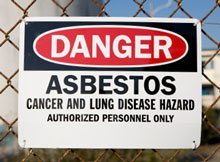Gender Differences in Men versus Women with Mesothelioma
 Asbestos is toxic and cancer-causing for human beings. Asbestos causes mesothelioma and other asbestos related diseases.
Asbestos is toxic and cancer-causing for human beings. Asbestos causes mesothelioma and other asbestos related diseases.
Asbestos-related diseases affect men and women differently. A recent study looked at Brazilian patients with asbestos-related diseases. These included mesothelioma, asbestosis, and lung and ovarian cancer.
Introduction
Mesothelioma, asbestosis, and pleural plaques are the main asbestos-related diseases. Many consider mesothelioma as the fingerprint of asbestos usage.
Between 1961 and 2017, more 7 million tons of asbestos were consumed in Brazil. Mesothelioma from occupational exposure is most common in men. They were often exposed to asbestos at the job site.
The number of non-occupational exposures is higher in women. Women are often exposed to asbestos from domestic and environmental sources.
It has been difficult to measure the gender differences in mesothelioma in the past. This is because of a lack of data on domestic and environmental asbestos sources.
It is only in recent years that scientists have begun to look at gender differences in mesothelioma.
Discussion
Data was collected from hospital admissions, cancer registries, and disease registries. Data showed an increased incidence of and mortality from mesothelioma.
The majority of occupational exposure in mining and asbestos cement plants were men. In fact, male workers were more than 7 times more likely to have occupational exposure than women.
In contrast, women showed higher asbestos consumption. This is likely due to dust from nearby asbestos plants, and environmental exposure.
The ratio for mesothelioma as a whole was more even. Men were only 1.7 times more likely to have mesothelioma than women.
The risk of mesothelioma increased if an individual had more non-occupational exposure. All environmental and domestic exposures to asbestos tended to be in women. This was a global trend in asbestos exposures.
Conclusions
The gender differences in mesothelioma diagnosis and survival center on exposure. Men are more likely to have asbestos exposure at work.
Women are more likely to have asbestos exposure at home or in the general environment.
One thing is clear, the greater cumulative asbestos exposure, the worse the prognosis. The greatest cumulative asbestos exposure leads to worsening outcomes.
Source
Saito, Cézar Akiyoshi, Marco Antonio Bussacos, Leonardo Salvi, Carolina Mensi, Dario Consonni, Fernando Timoteo Fernandes, Felipe Campos, Franciana Cavalcante, and Eduardo Algranti. “Sex-Specific Mortality from Asbestos-Related Diseases, Lung and Ovarian Cancer in Municipalities with High Asbestos Consumption, Brazil, 2000–2017.” International journal of environmental research and public health 19, no. 6 (2022): 3656. https://doi.org/10.3390/ijerph19063656





